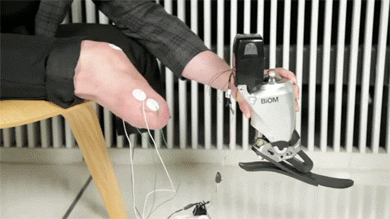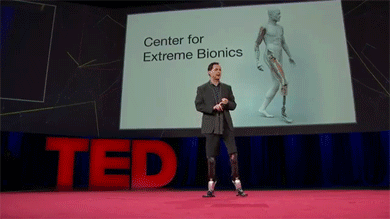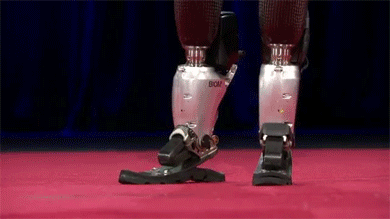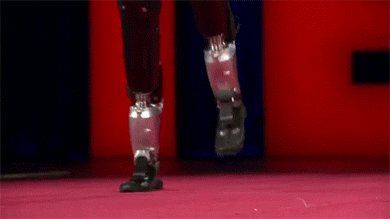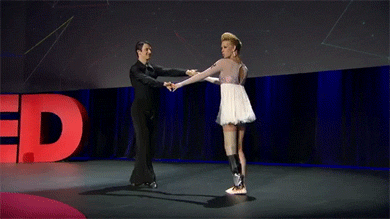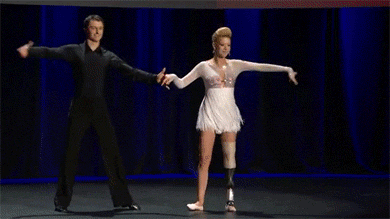Stubborn-turtle-blog

More Posts from Stubborn-turtle-blog and Others

This awesome plane-train hybrid could revolutionize transportation, but not for another 50 years
Imagine a future where a plane lands at an airfield that doubles as a rail yard. The cabin — one of three that cling to the underbelly of the aircraft like a baby possum to its mother — detaches, is seamlessly transferred to a nearby train, and then continues its journey toward the city center. Your multi-seat trip (taxi-to-subway-to-airtrain) from home to hotel suddenly becomes a one-seat, hassle-free ride. That’s the aim of a consortium of Swiss researchers with the conceptual Clip-Air, a bold-looking plane-train hybrid that despite its high-minded possibilities, will probably never get made.






RoboAction
Painting series by Dragan Ilić features abstracted mark-making using an industrial robot, sometimes carrying and guiding the artist himself:
The artist constantly transposes into the third dimension his decade’s long-running conceptual practice based on the usage of pencils as the basic draftsman’s tool, starting primarily with the media of performance art, installation and sculpture in extended field. Gradually, over the years, his expressive and mechanical compositions have become even more advanced with the development of modules, diverse in shape and sizes, devices designed for the task of mounting and holding his drawing tools, which has led ultimately to the construction of an appropriate drawing machine. Construed for non-artistic purposes, these robots have been reshaped into special draftsmanship implements with which the author is capable of processing his ideas at far greater speed and with considerably greater precision. The metamorphosis of the artistic work is positioned at a point where human and machine activity intersects, resulting in an interaction that is essentially based on the need to transcend the limitations of the human body.
More Here
Mission Possible: Redirecting an Asteroid
As part of our Asteroid Redirect Mission (ARM), we plan to send a robotic spacecraft to an asteroid tens of millions of miles away from Earth, capture a multi-ton boulder and bring it to an orbit near the moon for future crew exploration.
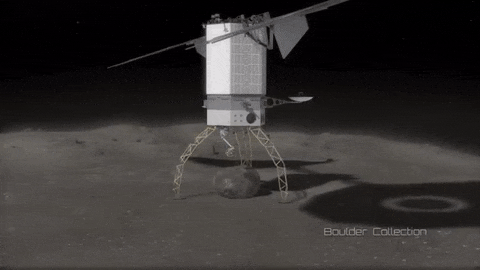
This mission to visit a large near-Earth asteroid is part of our plan to advance the new technologies and spaceflight experience needed for a human mission to the Martian system in the 2030s.
How exactly will it work?
The robotic spacecraft, powered by the most advanced solar electric propulsion system, will travel for about 18 months to the target asteroid.

After the spacecraft arrives and the multi-ton boulder is collected from the surface, the spacecraft will hover near the asteroid to create a gravitational attraction that will slightly change the asteroid’s trajectory.

After the enhanced gravity tractor demonstration is compete, the robotic vehicle will deliver the boulder into a stable orbit near the moon. During the transit, the boulder will be further imaged and studied by the spacecraft.

Astronauts aboard the Orion spacecraft will launch on the Space Launch System rocket to explore the returned boulder.

Orion will dock with the robotic vehicle that still has the boulder in its grasp.

While docked, two crew members on spacewalks will explore the boulder and collect samples to bring back to Earth for further study.

The astronauts and collected samples will return to Earth in the Orion spacecraft.
How will ARM help us send humans to Mars in the 2030s?

This mission will demonstrate future Mars-level exploration missions closer to home and will fly a mission with technologies and real life operational constraints that we’ll encounter on the way to the Red Planet. A few of the capabilities it will help us test include:
Solar Electric Propulsion – Using advanced Solar Electric Propulsion (SEP) technologies is an important part of future missions to send larger payloads into deep space and to the Mars system. Unlike chemical propulsion, which uses combustion and a nozzle to generate thrust, SEP uses electricity from solar arrays to create electromagnetic fields to accelerate and expel charged atoms (ions) to create a very low thrust with a very efficient use of propellant.
Trajectory and Navigation – When we move the massive asteroid boulder using low-thrust propulsion and leveraging the gravity fields of Earth and the moon, we’ll validate critical technologies for the future Mars missions.
Advances in Spacesuits – Spacesuits designed to operate in deep space and for the Mars surface will require upgrades to the portable life support system (PLSS). We are working on advanced PLSS that will protect astronauts on Mars or in deep space by improving carbon dioxide removal, humidity control and oxygen regulation. We are also improving mobility by evaluating advances in gloves to improve thermal capacity and dexterity.
Sample Collection and Containment Techniques – This experience will help us prepare to return samples from Mars through the development of new techniques for safe sample collection and containment. These techniques will ensure that humans do not contaminate the samples with microbes from Earth, while protecting our planet from any potential hazards in the samples that are returned.
Rendezvous and Docking Capabilities – Future human missions to Mars will require new capabilities to rendezvous and dock spacecraft in deep space. We will advance the current system we’ve developed with the international partners aboard the International Space Station.
Moving from spaceflight a couple hundred miles off Earth to the proving ground environment (40,000 miles beyond the moon) will allow us to start accumulating experience farther than humans have ever traveled in space.
Make sure to follow us on Tumblr for your regular dose of space: http://nasa.tumblr.com
Women need to be able to nurse, and pump, without shame when they return to their work.

Alarming disparities in health outcomes could be prevented by breastfeeding
A new study published in the Journal of Pediatrics showed that black infants had more than twice the deaths of whites attributable to lack of optimal breastfeeding. Black infants also had more than three times the rate of necrotizing enterocolitis, a devastating disease of preterm infants, attributable to suboptimal rates of feeding with their mother’s own milk.
White women initiate breastfeeding at much higher rates than black women and slightly higher rates than Hispanic women; moreover, white women breastfeed longer and have higher rates of exclusive breastfeeding. Current rates for black, white, and Hispanic women were defined as “suboptimal breastfeeding.” This is the first study to show how these disparities translate into differences in health outcomes.
“If mom can’t go to work, she’s not getting paid. This may spell the difference between making rent that month, or keeping the lights on, or paying for basic needs,” said Dr. Melissa Bartick, assistant professor of medicine at Cambridge Health Alliance and Harvard Medical School, and lead author of the study. “When I first saw our results, I cried.”
Melissa C. Bartick, Briana J. Jegier, Brittany D. Green, Eleanor Bimla Schwarz, Arnold G. Reinhold, Alison M. Stuebe. Disparities in Breastfeeding: Impact on Maternal and Child Health Outcomes and Costs. The Journal of Pediatrics, 2016; DOI: 10.1016/j.jpeds.2016.10.028
It is recommended that women breastfeed each child exclusively for the first six months of life, followed by continued breastfeeding while complementary foods are introduced for at least the first year of life. Credit: © gamelover / Fotolia


There’s only one way to clean the inside of your hood. Here we see our rotation student, Cam, demonstrating the effectiveness of the technique;)
Scientific Women You Haven’t Heard of (Yet): Louise Pearce

Louise Pearce is best known for her work that lead to a cure for sleeping sickness. Pearce traveled to what is now the Democratic Republic of the Congo to test the arsenic based cure, tryparsamide, in cooperation with a hospital in Léopoldville that was coping with an outbreak of sleeping sickness. This trip helped establish parameters for treatment (such as safe and optimum dosages) of sleeping sickness with tryparsamide. Pearce also used rabbit colonies to study syphilis and cancer over generations. Pearce was lesbian and a feminist and lived with Sara Josephine Baker and Ida A.R. Wylie. Pearce’s curriculum vitae is impressive and lists Standford University, Boston University and Johns Hopkins University as her alma maters.
Learn more: (x) (x) (x)
Previous Installments: Lynn Conway, Noella Marcellino, Tu Youyou
About the series: (x)
-
 frost-steam liked this · 6 years ago
frost-steam liked this · 6 years ago -
 magont liked this · 7 years ago
magont liked this · 7 years ago -
 flurryfestival-blog reblogged this · 8 years ago
flurryfestival-blog reblogged this · 8 years ago -
 elissarliadon liked this · 8 years ago
elissarliadon liked this · 8 years ago -
 book-dragon-13 reblogged this · 8 years ago
book-dragon-13 reblogged this · 8 years ago -
 stubborn-turtle-blog reblogged this · 8 years ago
stubborn-turtle-blog reblogged this · 8 years ago -
 stubborn-turtle-blog liked this · 8 years ago
stubborn-turtle-blog liked this · 8 years ago -
 lovelythingsinternal liked this · 8 years ago
lovelythingsinternal liked this · 8 years ago -
 danceoftheday reblogged this · 8 years ago
danceoftheday reblogged this · 8 years ago -
 redeemed-and-set-free reblogged this · 8 years ago
redeemed-and-set-free reblogged this · 8 years ago -
 meowz-a-bunga reblogged this · 9 years ago
meowz-a-bunga reblogged this · 9 years ago -
 blondermelon reblogged this · 9 years ago
blondermelon reblogged this · 9 years ago -
 sleepybeaker liked this · 9 years ago
sleepybeaker liked this · 9 years ago -
 kane214 reblogged this · 9 years ago
kane214 reblogged this · 9 years ago -
 darthbridget liked this · 11 years ago
darthbridget liked this · 11 years ago -
 anima-poetae liked this · 11 years ago
anima-poetae liked this · 11 years ago -
 a-life-time-passion liked this · 11 years ago
a-life-time-passion liked this · 11 years ago -
 localizedapocalypse reblogged this · 11 years ago
localizedapocalypse reblogged this · 11 years ago -
 anuntitledstory reblogged this · 13 years ago
anuntitledstory reblogged this · 13 years ago -
 abeautifulnevermind liked this · 13 years ago
abeautifulnevermind liked this · 13 years ago -
 lifewithasparkle-blog-blog liked this · 13 years ago
lifewithasparkle-blog-blog liked this · 13 years ago -
 introvertedactivist liked this · 13 years ago
introvertedactivist liked this · 13 years ago -
 meilileile reblogged this · 13 years ago
meilileile reblogged this · 13 years ago -
 cataclysm-in-repose reblogged this · 13 years ago
cataclysm-in-repose reblogged this · 13 years ago -
 thethrillofaspin liked this · 13 years ago
thethrillofaspin liked this · 13 years ago -
 itsjusttimeslikethese-blog reblogged this · 13 years ago
itsjusttimeslikethese-blog reblogged this · 13 years ago -
 tiffanneariana liked this · 13 years ago
tiffanneariana liked this · 13 years ago -
 tiffanneariana reblogged this · 13 years ago
tiffanneariana reblogged this · 13 years ago -
 fakeroadie reblogged this · 13 years ago
fakeroadie reblogged this · 13 years ago
Gaming, Science, History, Feminism, and all other manners of geekery. Also a lot of dance
243 posts

